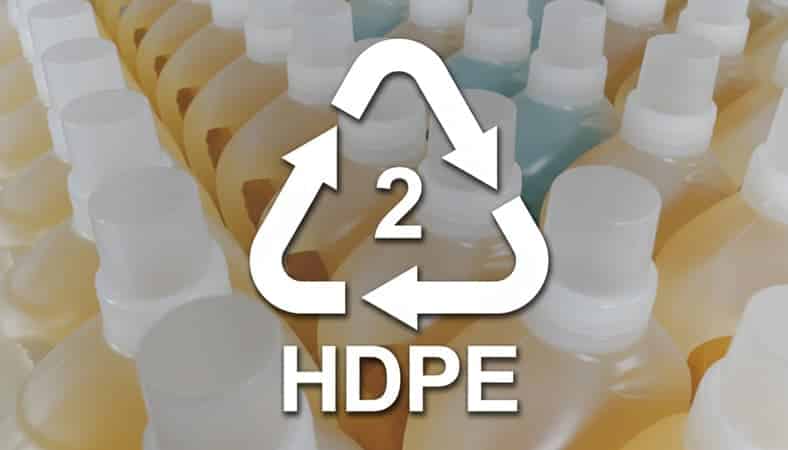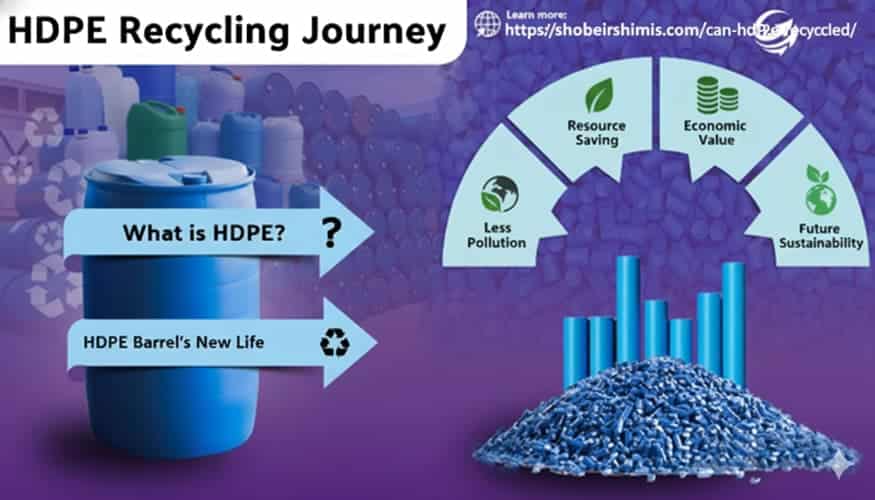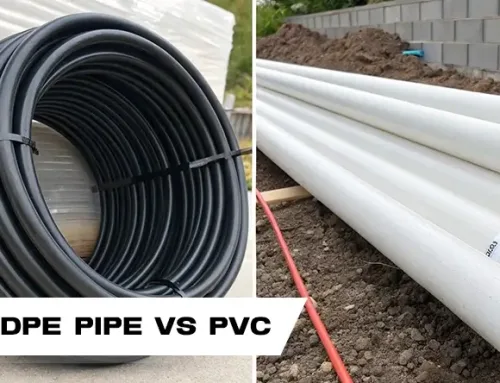As nations strengthen Plastic waste management frameworks and industries pursue environmental accreditation, HDPE recycling has emerged as a cornerstone of responsible production.
In this guide master HDPE recycling, compare Virgin HDPE vs Recycled HDPE, explores the fundamentals, technical steps, economic incentives, closed loop plastic recycling solution, and future challenges of HDPE recycling, giving manufacturers and businesses a full picture of its potential.
What is HDPE and Why is its Recycling Critical for the Circular Economy?
Recycling High Density Polyethylene (HDPE) identified by the Plastic recycling symbols #2, is critical for the circular economy. The global market for recycled HDPE is expected to grow robustly at a compound annual growth rate (CAGR) of about 8.3% from 2025 to 2032, driven by rising demand for sustainable materials across industries.

Defining High Density Polyethylene (HDPE)
High Density Polyethylene (HDPE) is a tough thermoplastic polymer widely valued for its durability, resistance to chemicals, and moisture tolerance. Plastic recycling symbol #2, making it easy to recognize in separation and sorting facilities. HDPE is commonly used in food and beverage packaging such as milk jugs, consumer goods like shampoo and detergent bottles, as well as in industrial products including pipes, wheelie bins, and containers. Its balance of low weight and high strength makes it one of the most valuable polymers for both consumers and engineers.
The Economic and Environmental Case for HDPE Recycling
Environmentally, HDPE’s non-biodegradable structure is both its greatest strength and its biggest challenge. HDPE is non-biodegradable and can take hundreds of years to decompose naturally. Recycling HDPE reduces the volume of plastic waste in landfills and oceans, mitigating environmental pollution. From an energy perspective, recycling HDPE consumes considerably less embodied energy compared to manufacturing virgin resin from petrochemicals. Life Cycle Analysis (LCA) studies show that mechanical recycling of HDPE reduces energy consumption by up to 75% versus virgin production, while minimizing CO₂ emissions.
The global recycled HDPE market is projected to expand significantly, fueled by sustainability mandates and growing consumer awareness. The market value was estimated at $8.4 billion in 2024 and expected to reach $17.2 billion by 2033.
Demystifying the Mechanical Recycling Process: Steps and Technical Challenges
How is HDPE recycled? Mechanical recycling of HDPE involves a series of steps designed to reclaim and repurpose plastic waste without altering the polymer’s chemical structure.

Step-by-Step Mechanical Recycling of HDPE
The process of HDPE recycling unfolds as follows:
- Collection & Transportation: Post-consumer plastics are gathered via curbside programs, industrial take-back systems, or direct supplier contracts.
- Sorting: The HDPE is separated from other plastics such as PET and PP, often using near-infrared (NIR) sorting technology that identifies plastic types efficiently.
- Washing & Cleaning: This phase is energy-intensive. Contaminants—food residue, labels, oils, dirt, and adhesives—are removed using high-temperature water and detergents. to ensure contaminant-free material. Thorough drying follows to prepare the plastic for processing. Residual impurities can compromise polymer strength, so stringent washing is vital.
- Grinding & Granulation: Cleaned HDPE is shredded into flakes or micro-pellets and screened for size uniformity. It increases surface area and improves melting performance.
- Compounding & Pelletizing: The granules are melted using extruders and then cooled and pelletized into usable HDPE pellets. These pellets can then be used as input material in manufacturing new products.
Specialized Recycling Requirements: Colored vs. Natural HDPE
HDPE recycling varies by pigmentation. Natural HDPE (e.g., milk jugs) is typically recycled back into the same types of food-grade products, contributing to a true closed-loop recycling system. Labels on these containers require wash-off capability to avoid residue contamination in the recycling stream.
Colored HDPE (e.g., shampoo bottles) is usually granulated and then dyed black. This coloration prevents the material from being recycled back into food-grade containers. Labels on colored HDPE need strong adhesion and compatibility with recycling but do not require wash-off properties.
Advancing rHDPE Yield (Label Technology and Compliance)
Recent technological advances have focused on improving rHDPE yield by enhancing label compatibility. Innovations like Avery Dennison’s AD CleanFlake™ allow labels to detach cleanly during the wash stage without contaminating polymers. This technology maximizes rHDPE yield and quality by preventing label fragments from mixing with recycled plastic.
Label and ink systems must also comply with international standards such as APR Critical Guidance and EPBP requirements. For best performance, inks should be ultraviolet-curable, and the combined label adhesives HDPE, system density should remain below 1.0 g/cm³ to ensure it floats away from HDPE flakes during washing.
Material Performance Showdown: Virgin HDPE vs Recycled HDPE
As businesses weigh cost savings against product integrity, understanding the balance between Virgin HDPE vs Recycled HDPE is crucial.
The Core Differences in Composition and Cost
Virgin HDPE is certified non-toxic, non-staining, and fully compatible with food-contact regulations by agencies such as the USDA and FDA. It is produced directly from ethylene monomer—a pure, petrochemical derivative offering uniform molecular structure and color stability.
By contrast, Recycled HDPE is derived from post-consumer or post-industrial waste streams. While significantly cheaper, its prior use can introduce uncertainties about chemical content, contamination, or degradation. Food-contact compliance is normally restricted unless the recycling process meets stringent decontamination standards. Recycled HDPE products often appear dark brown or black to mask color variability from mixed feedstock.
Key Performance Considerations and Durability
Recycled HDPE provides satisfactory strength for most industrial applications yet tends to age faster under UV exposure and thermal cycling. Research indicates about a 12% drop in impact resistance relative to virgin resin after repeated melt-and-cool cycles.
Impurities like detergents, pigments, or foreign plastics can further affect polymer uniformity, leading to brittleness over time. Therefore, careful filtration and controlled reprocessing conditions are vital in maintaining quality standards. Manufacturers using recycled HDPE for sensitive applications such as pharmaceuticals or food must ensure compliance with safety data sheets (MSDS) and food safety regulations, exercising caution about contamination and performance.
Market Drivers and Policy: Boosting Post-Consumer Recycled Plastic Supply
How to boost post-consumer recycled plastic supply? Continue Reading.
How Policy is Driving Demand for Recycled Materials
Government initiatives like Extended Producer Responsibility (EPR) are transforming supply chains. Under EPR, producers are financially accountable for their packaging’s end-of-life recovery. This policy encourages the use of higher recycled content and funds improvements in local collection and sorting infrastructure. Implementation of comprehensive EPR frameworks could raise residential recycling rates in some U.S. states to 75%, compared with current rates of less than 30%.
Expanding Industrial Uses for Recycled HDPE
Recycled HDPE’s durability makes it indispensable for non-food applications, powering a growing range of industrial uses such as:
- Plastic lumber and outdoor decking
- Drainage and sewer pipe manufacturing
- Construction geomembranes and liners
- Impact-resistant automotive interior components
- Wheelie bins and pallets
Next Steps for Businesses: Implementing a Closed-Loop HDPE System
Establishing a closed-loop recycling system helps reduce disposal costs, landfill taxes, and lowers environmental impact while creating a sustainable supply of recycled material.
Generating Value from HDPE Scrap
Companies looking to enhance resource efficiency can capitalize on HDPE scrap streams by selling or reprocessing them internally. Scrap can include blow molding waste, bottle trims, extrusion lumps, and rejected components.
A reliable partner specializing in HDPE regrind trading can convert these streams into clean pellet material for reuse. Establishing such partnerships not only reduces landfill costs but also generates tangible value. Adopting a closed-loop plastic recycling solution allows manufacturers to reuse their own waste as input material. The approach promotes consistent quality control, reduces carbon emissions, and significantly cuts raw material expenditure.
Future Outlook: Chemical Recycling and Innovation
Mechanical recycling remains the current mainstay due to its efficiency, but chemical recycling technologies are advancing swiftly to handle contaminated or multi-layer plastics. Processes such as pyrolysis, gasification, and solvent dissolution break down polymers into molecular monomers or oils. These can then be repolymerized into near-virgin-grade plastics without residual impurities. Though energy-intensive, these techniques represent the next frontier in achieving full material recovery.
Conclusion: Securing a Sustainable Supply of High-Quality Recycled HDPE
HDPE recycling is foundational to the circular economy and critical for reducing environmental impact. While virgin HDPE remains necessary for food-grade and high-performance applications, advances in mechanical recycling, label technology, and policy incentives like EPR make recycled HDPE an increasingly viable and sustainable material.
HDPE Plastic Recycling Price: The market value of recycled HDPE fluctuates with oil prices, demand for resins, and contamination levels. On average, high-grade natural rHDPE pellets command a premium over colored equivalents, while mixed-grade flakes trade at lower rates. Businesses aiming to profit from Recycled HDPE market size should monitor global resin indices to time their sales effectively.







Leave A Comment